Meteors are a great fun. This week, the peak of the Orionid meteor shower is coming up. Orionids are another impressive celestial event to observe besides Perseid, Geminid, or Eta Aquarid meteor showers. Their peak happens around October 21st and 22nd, with about 15-20 meteors per hour. We take a look at the weather forecast, discussing some photography tips on how to see these meteors best!
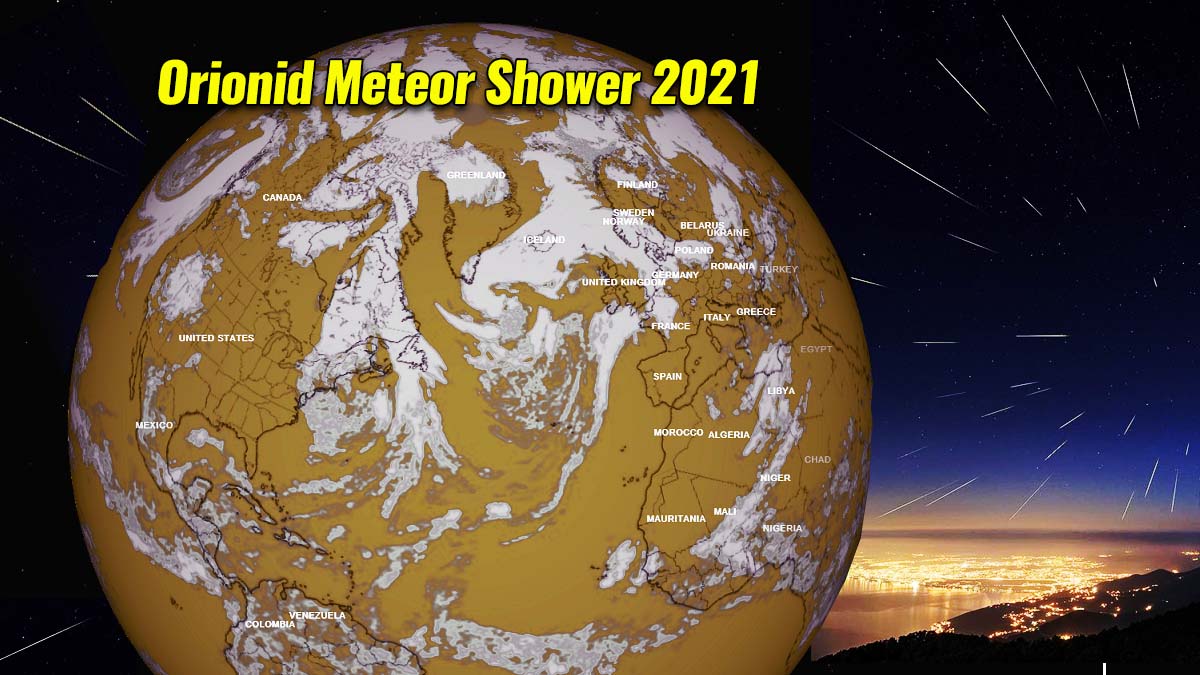
Depending on the present weather conditions and Moon in the sky, you might see and even catch some good ones.
This year, the shining bright nearly full Moon will limit the observations during both peak nights, as it will stay up through all night. Nevertheless, there are good chances for skywatchers across both continents. Temperatures are getting colder, so make sure you take warm clothes for better joy with your observations.
Let’s learn what are the Orionid meteors, where are the best locations to observe this year weather-wise, and how we can photograph and catch some bright ones!
WHAT IS THE ORIONID METEOR SHOWER
The Orionid meteor shower or short, Orionids are bits and pieces of the well-known comet Halley, which rounds the Sun every 76 years. When this occurs, the comet releases a stream of small dust particles in its path. The Earth plows through the stream every year around October 20-23rd.
The Earth and particles collide at 67 km/s and the particles burn up high in the atmosphere, producing bright streaks of light, that we are known as meteors. The dust particles are called meteoroids and travel on roughly parallel paths. But due to the same geometric effect that makes it look like two railway tracks merge in the distance, all Orionids will seem to come from a single point in the sky. This point – the radiant is in the constellation Orion, hence why this meteor shower got its name as Orionids.
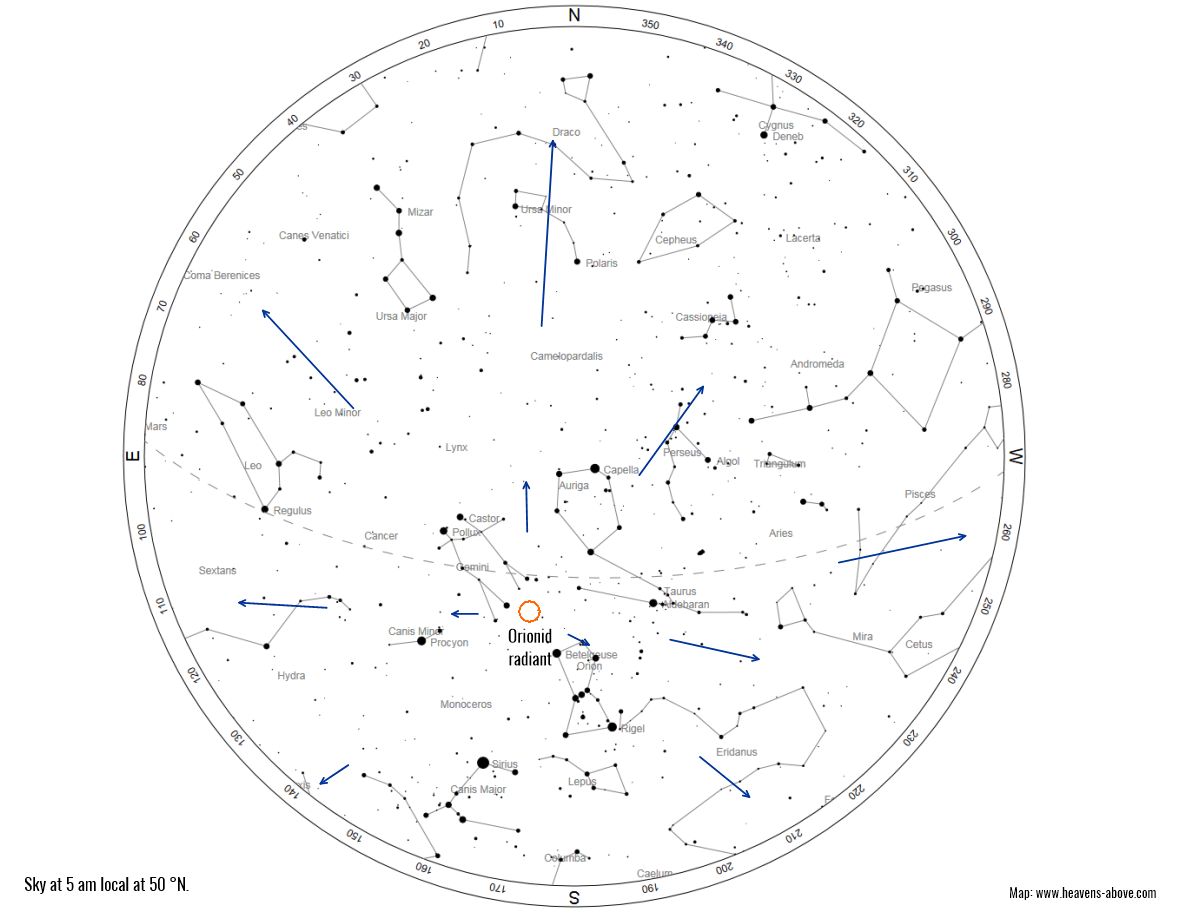
Above: The location of Orionid radiant in the sky at 5 am local time at 50 ° North latitude during the peak nights. All Orionids will appear to trace back to this point in the sky.
That is a meteor shower in a nutshell and the Orionids are a reliable annual meteor shower. At their peak, we are normally treated by about 15 to 20 meteors per hour. Especially if you watch them from a dark spot, away from urban light pollution which greatly diminishes the number of meteors. Make sure to get yourself far away from urban lights.
You can also try to get to a higher mountain location, where the air mass is typically clearer and darker. Note, that there is another catch with the Orionids: the constellation Orion does not rise until midnight, so there will be no Orionid meteors in the sky in the evening hours! Therefore, the best hours to watch are the final hours before dawn.
Observing and photographing Orionids
Observations of Orionid meteors are pretty easy. As the nights are becoming colder in October, dress warm and make sure to bring enough clothes, as you will get cold after some time. Take a reclining chair, get out under a dark sky, and gaze skywards. Sooner or later you will see a meteor.
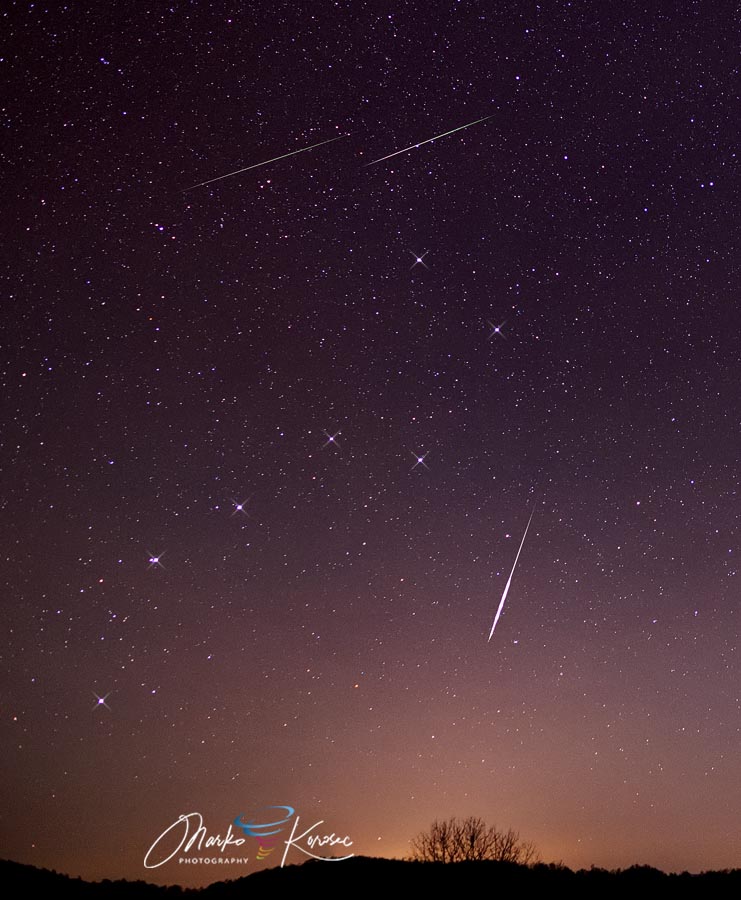
Watching any of the annual meteor showers is great fun, particularly if there are bright meteors, obviously. It is even more fun trying to catch a meteor with a camera, or even on a video frame. And it is actually easier than it might sound.
HOW TO PHOTOGRAPH THE ETA AQUARIID METEOR SHOWER – METEOR PHOTOGRAPHY
Orionid meteor shower photography (or any other meteor showers) can really be a lot of fun and with a bit of luck, you could catch a very bright one too. Those who bring bright meteors are known as fireballs! We have prepared some tips and tricks on how you can do it properly and successfully.
First of all, it is best to do this with a camera that has the option of making long exposures. Any interchangeable lens camera (DSLR or mirrorless) will have the long exposure option, but also many compact cameras and some phone cameras have the long exposure option nowadays.
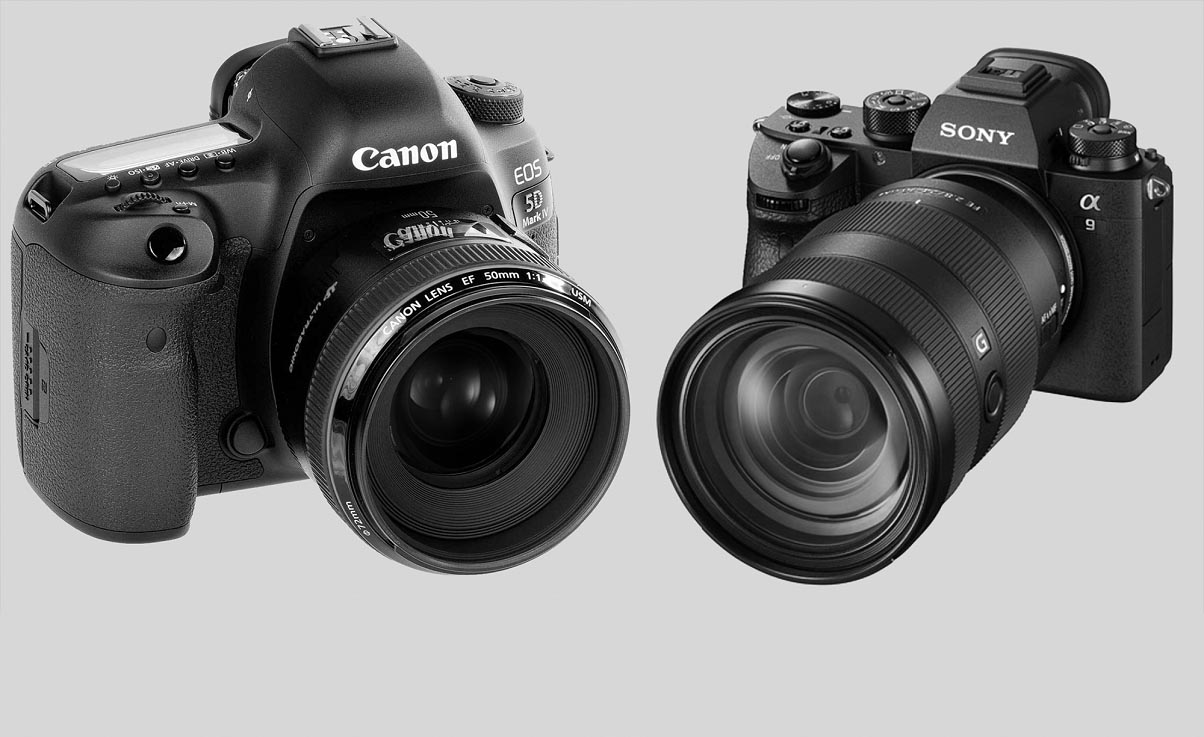
For best results, make sure to take a remote trigger (or a timer) for the camera with you and place your camera on the sturdy tripod. Then, point the camera into the and cross fingers for some good luck. Usually, the stronger the meteor shower is, the better results and great meteor catches you could potentially achieve.
How to do the meteor photography – Camera settings
The best time to photograph meteors is during a maximum of any major meteor showers, we call this the meteor shower peak. The greatest chance is with the most recognized and active meteor showers, such as the Quadrantids, Perseids, and Geminids, but it also works with moderately strong meteor showers, such as the Orionids,… Lyrids, Eta Aquariids, Taurids, Leonids, and even Ursids.
When we decide to do meteor photography, we always avoid using Auto and preset scene modes. You need to be in full control of the camera and set the mode to be able to take long exposures. There are several ways about it and they may vary depending on your camera brand, but the most important is to find the M mode (manual mode). Many cameras may have B as well – Bulb mode which allows you to use a remote trigger to do exposures of any length.

The other shooting mode that is useful is the shutter priority mode (usually the button settings at Tv or S). With this photography mode, you can select the exposure time for your photo and the aperture will accommodate automatically. Note that all interchangeable lens cameras have these modes, regardless of the brand – Canon, Nikon, Pentax, Sony, or any other on the market, you will be just fine.
Make sure to use sufficiently high ISO sensitivity setting to capture meteors, at least 1600 or better even higher will be good in 2021. How far up with the ISO settings you want to go indeed strongly depends on your tolerance for the noise and grainy picture. And indeed, besides this, also how good the ISO performance your camera has.
How to do meteor photography – choosing the proper lens
When hooding the right lens for astrophotography and meteor photography, any wide-field or standard lenses on the market will be good, so will any mid-range zoom lens as well. And also most entry and up to prosumer crop sensor (DX or APS-C) cameras come with mid-range kit zoom lenses. Those are usually between 16 and 18 mm wide end and have at least f/2.8, even down to f/4 aperture. These are pretty solid lenses for meteor photography anytime.

Above: f/1.4 – f/8.0, from winde open to closed aperture
The standard 50 mm lenses are fine too, usually being wide open e.g. to f/1.8 or even f/1.4. This lens gathers a lot of light and can help you to capture even those fainter meteors that are normally hard to see with the naked eye. However, the downside of these lenses is the small field of view, particularly if you use those on crop sensor cameras.
50 mm will be the limit for your focal length for meteors let’s say, so avoid using even longer focal lengths as the field of view becomes too small to be successful enough. Unless you plan to take advantage of your pure luck and point the camera into a known deep-sky object, e.g. Orion nebula, M31 Andromeda Galaxy, Pleiades, etc., and trying to get a fine composition with a bright meteor (fireball) into that narrow field, indeed.

Above: The peak of Perseid meteor shower, taken over the city of Rijeka, Croatia in 2019. Photographed from mt. Ucka, with 24 mm lens. Photograph by Marko Korošec
As we can see from the photograph above, the best lenses for meteor shower photography are wide-field lenses. Those could be a manual lens with the maximum aperture of f/1.4 to f/2.0, available from several brands (e.g. Canon, Nikon, Samyang, Rokinon, or Sigma Art). The very sharp lens also!
When you are out in the field, make sure to properly set your camera, mounted on the tripod and check that the camera is leveled properly. For the best level setup, you can also look through the viewfinder and make sure the horizon is at a good level.
Then focus on the lens where the easiest way to do it is to set the lens to manual (M) and focus it on a distant light or a star. To be even more precise, use the Live View mode if your camera has it and set the maximum magnification to optimally focusing it.
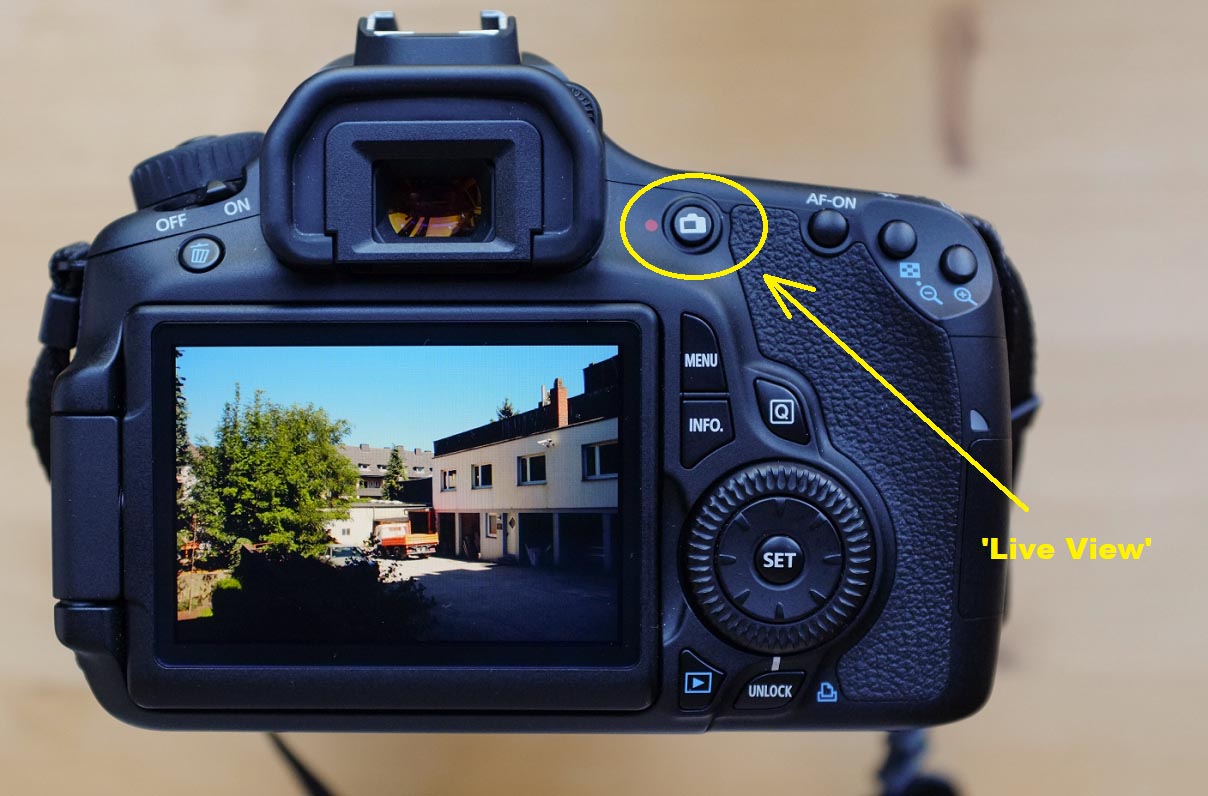
Above: How to enter the Live View mode on a Canon camera
Once you have the focus perfectly done, keep the lens in manual focus mode to avoid the camera refocusing. Set the aperture to as fully open as possible and set the ISO between 1600 and 3200. You are ready to go. Be prepared that you will take a lot of photos before catching the first good meteor. But the more persistent you are with this, the more likely you are to catch a bright one soon or later!
How to do meteor photography – additional tips
From our years of experience photographing meteor showers in recent decades, we have some additional tips that could help you fine-tune your meteor photography skills and give you even better results at the end.
When you take photographs of the meteors, make sure you don’t get the background sky too bright. We want a good contrast between the sky and grazing meteors. Typically a histogram with a peak around 1/8 to 1/6 full (from left to right) is considered optimal for this.
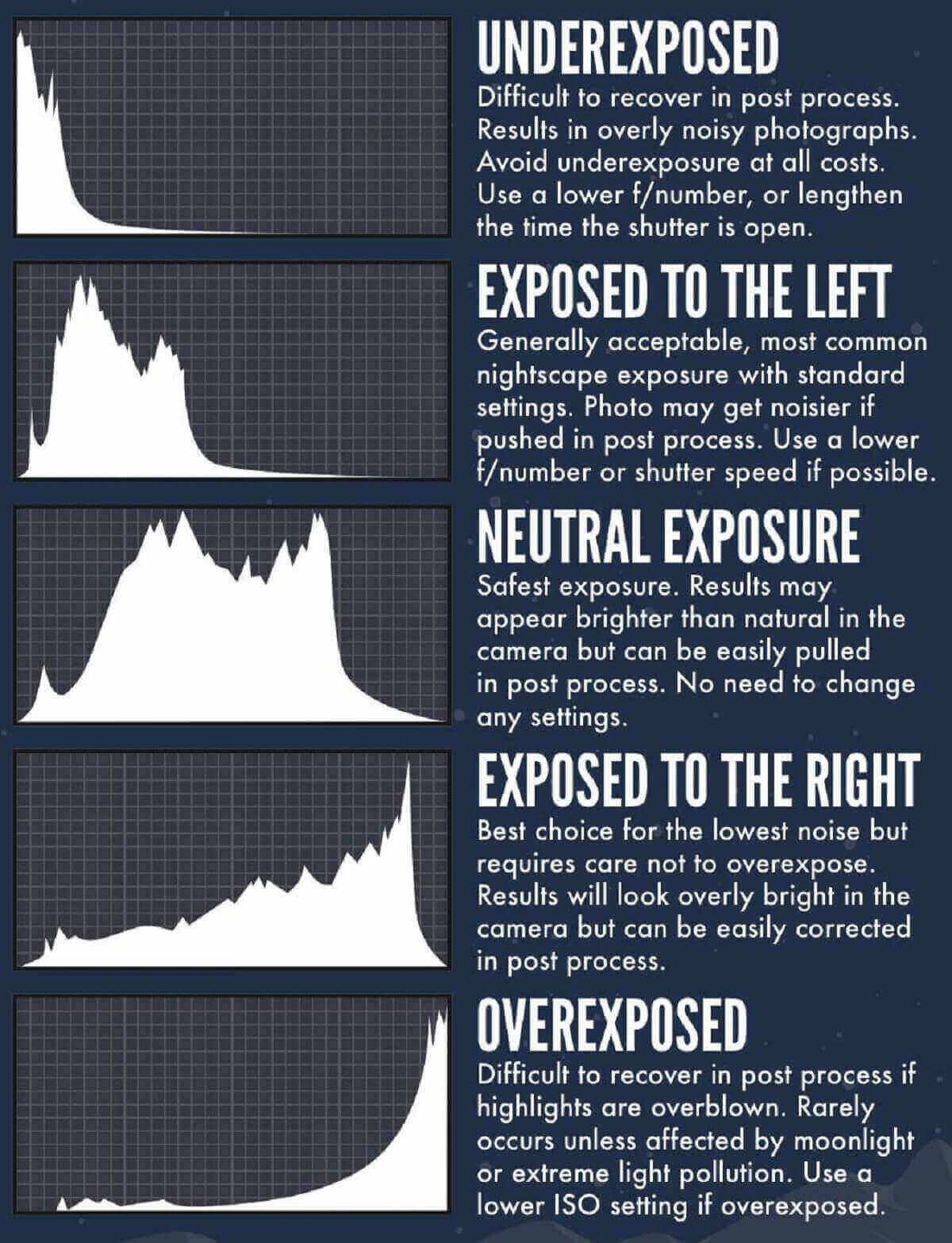
Above: How to best exposure the photograph based of the histrogram
This indeed depends on the lens you use, the ISO setting, and how dark your sky at that location is but it works. This is also why it is your great goal to get to the darkest location possible where you live, away from the urban/city lights and pollution.
The fast lenses and high ISO settings will brighten your background pretty quickly, so a bright and light-polluted sky will also get the background brightness much faster. An f/2.8 lens at ISO 3200 under the rural sky will only need about 20 seconds to get to this brightness limit.
While the very fast lenses, e.g. f/1.2 to f/1.8, will produce the best results under *very* dark skies. Brighter, light-polluted skies will saturate the background quickly and ruin the good contrast you want to achieve with meteors. So keep this in mind and look for the darkest location possible for the best results.
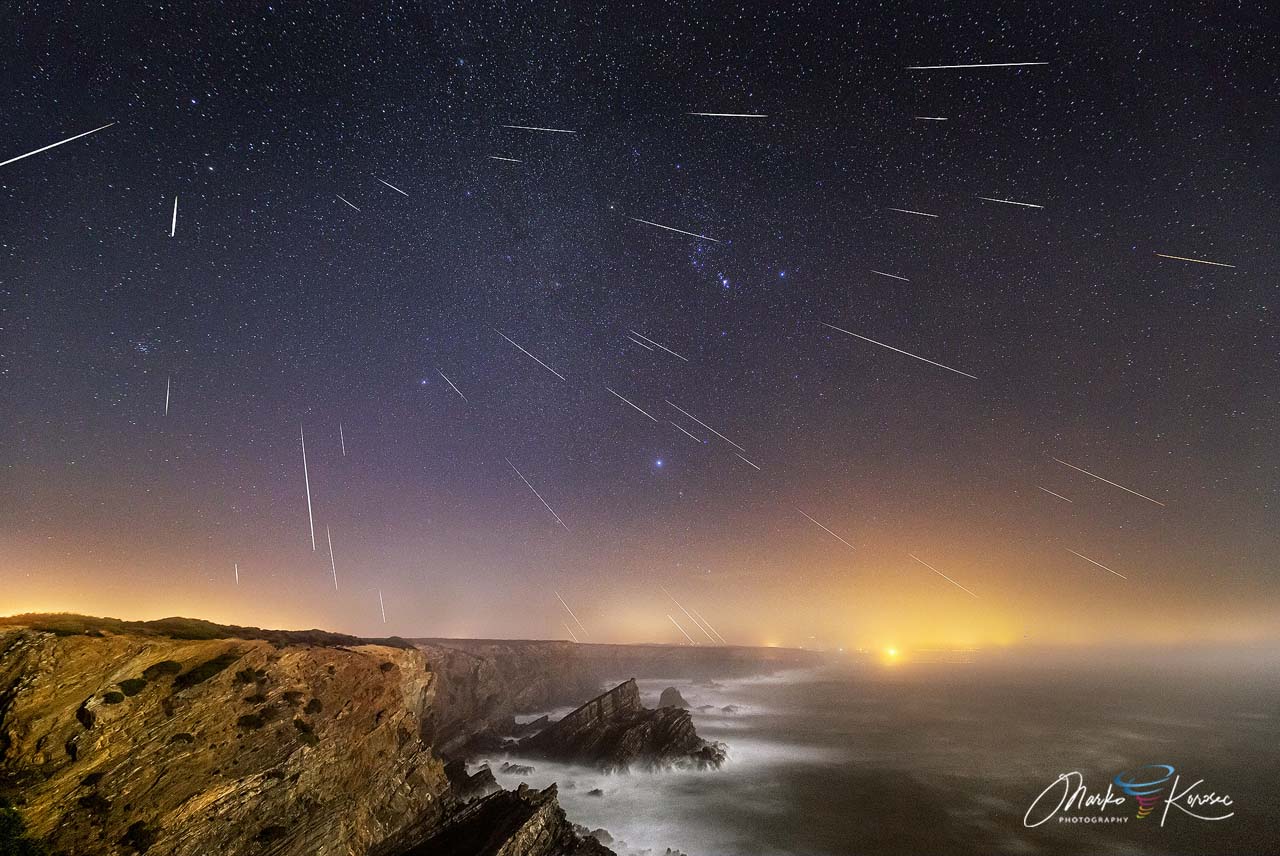
Statistically, if using a 10-second exposure, you will probably miss up to about 10 percent of meteors. So keep the shooting exposure at least 15 seconds or more. Ideally around 20 seconds works.
Important: Do not forget to turn off your High ISO noise reduction, as you can do this in post-processing. And also, turn off your long exposure noise reduction. If this is set as on, the camera makes a dark exposure for every photo you make. This means you would only photograph the sky for 50% of the time, missing half the meteors very likely. Be sure you don’t want to miss a great bright meteor while your camera is using the time to create a dark exposure frame.
Always take photographs in RAW format, or RAW + JPEG. As it is pretty important to have a RAW photo for processing later. Any details can be taken out of that RAW file pretty easily in the post-processing procedure.
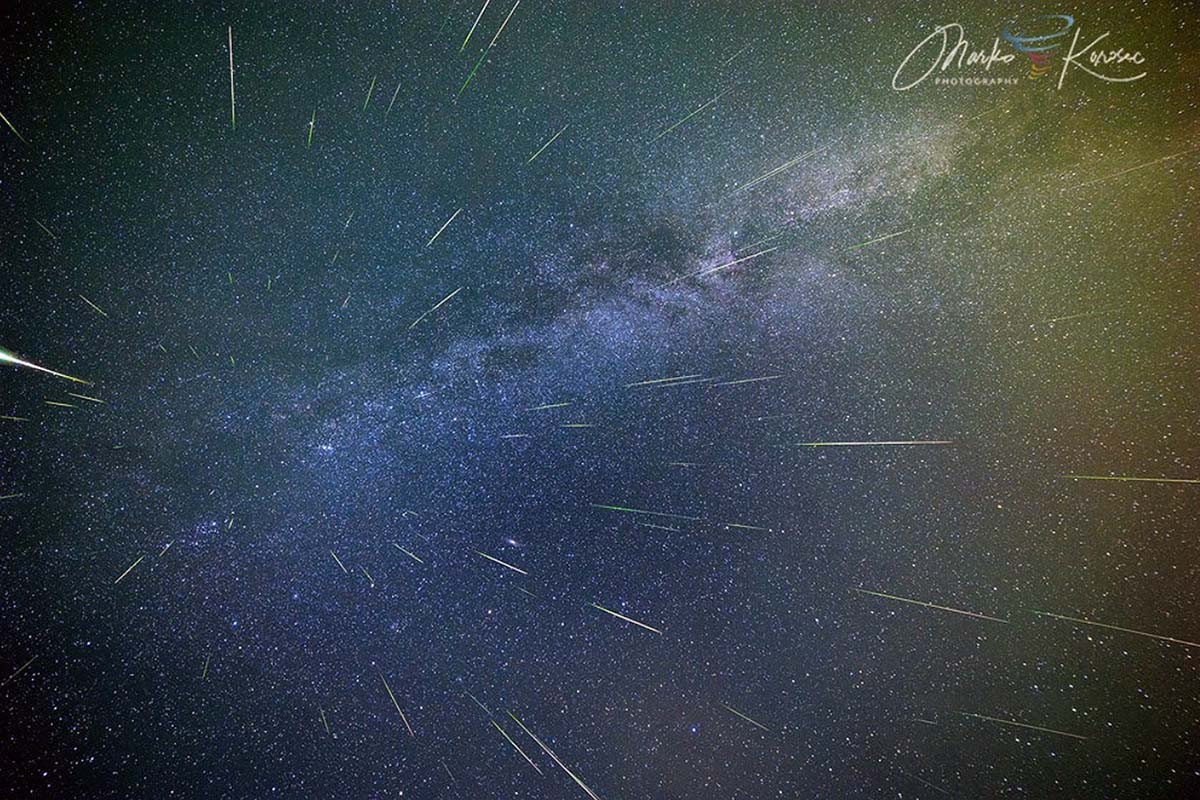
Repeating, but… set your focus properly, use Live View mode and a bright star or very distant light source to focus your photo. Make absolutely sure your focus is dead on and no halo is seen around the stars (points). Keep your camera and lens in manual focus mode, otherwise, it will try to refocus once you start your exposures and you will get the photos out of focus immediately.
And although the Orionid meteor shower is best to observe after your local midnight, the best times for observing most of the meteor showers are from 10 pm until about 5 am local time.
ORIONID METEOR SHOWER 2021 WEATHER FORECAST FOR EUROPE AND THE UNITED STATES
Now, as we have learned how to take proper photos of meteors, let us take a look over the weather forecast in the Northern Hemisphere, precisely the North American and European continents this week. We especially look at the cloud coverage in the low/mid-level height which is the best level we usually look for when forecasting the potential to have clear skies for the best observations.
Although high clouds do matter too, at least the brightest meteors are still visible through the cirrus clouds. While the low/mid-level clouds completely obscure the meteors and night sky, ruining any celestial show.

The overall weather pattern across Europe hints at a strong blocking High over the North Atlantic, extending into western and southwestern parts. Another High is places over the Black Sea region and th Middle East. In between, a deep long-wave trough sits over northern Europe, extending towards the Mediterranean.
This means rather unsettled conditions for many, unfortunately.
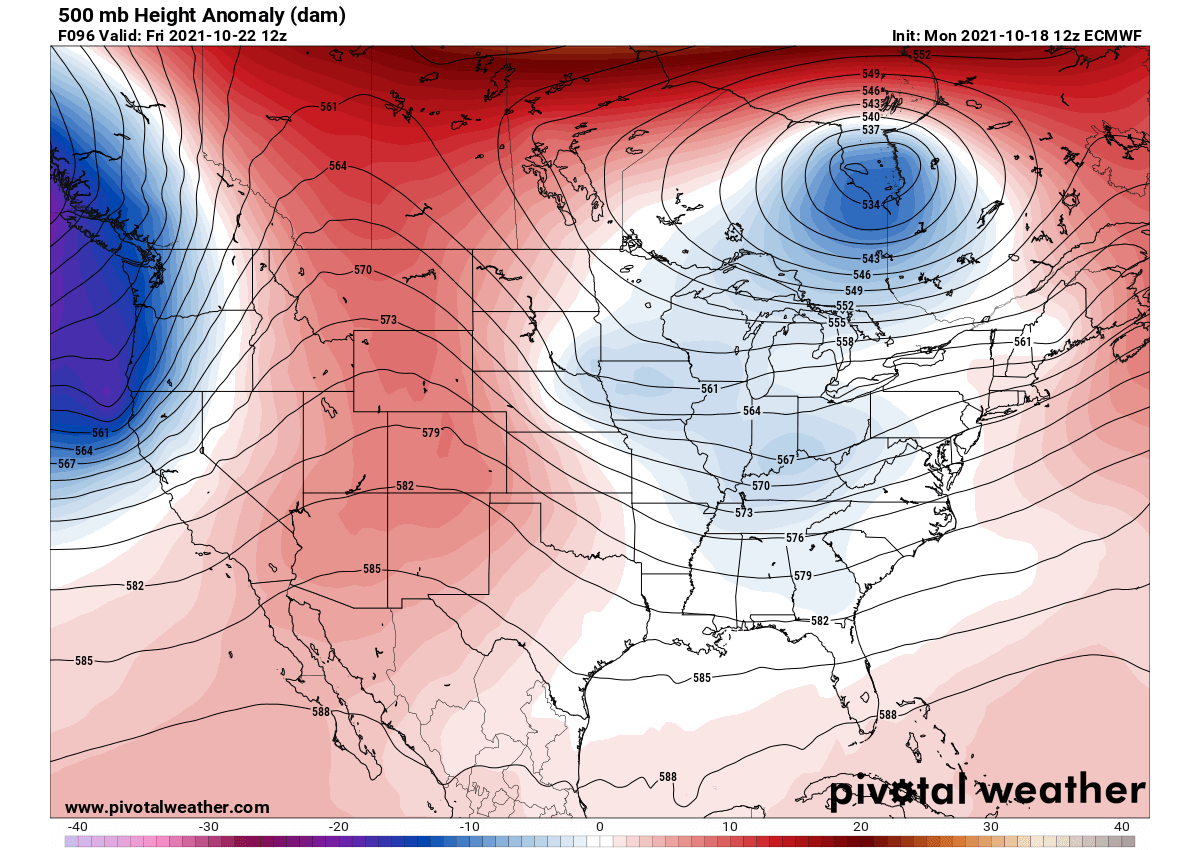
While across the Atlantic in the United States and Canada, a large upper-level ridge and surface high-pressure system bring stable conditions to the western half of the continent. A large upper low will dominate the east-northeast part of the U.S., setting more clouds and potentially precipitation for the East Coast.
CLOUD COVERAGE FOR CANADA, THE U.S. AND EUROPE
Looking over the cloud coverage for Europe, Canada, and the United States for the peak night on October 22nd, the better cloud coverage conditions are over North America. A lot of clear skies will be available across the central parts and the Rockies, from southern Canada in the north to Texas and Mexico in the south.
The West and the East Coast will see a lot of clouds, also the Great Lakes and part of the Midwest. A frontal system should also bring cloudy skies for most of the Southeast U.S. But some clearer skies will at least be possible across the lower Mississippi Valley and Florida.
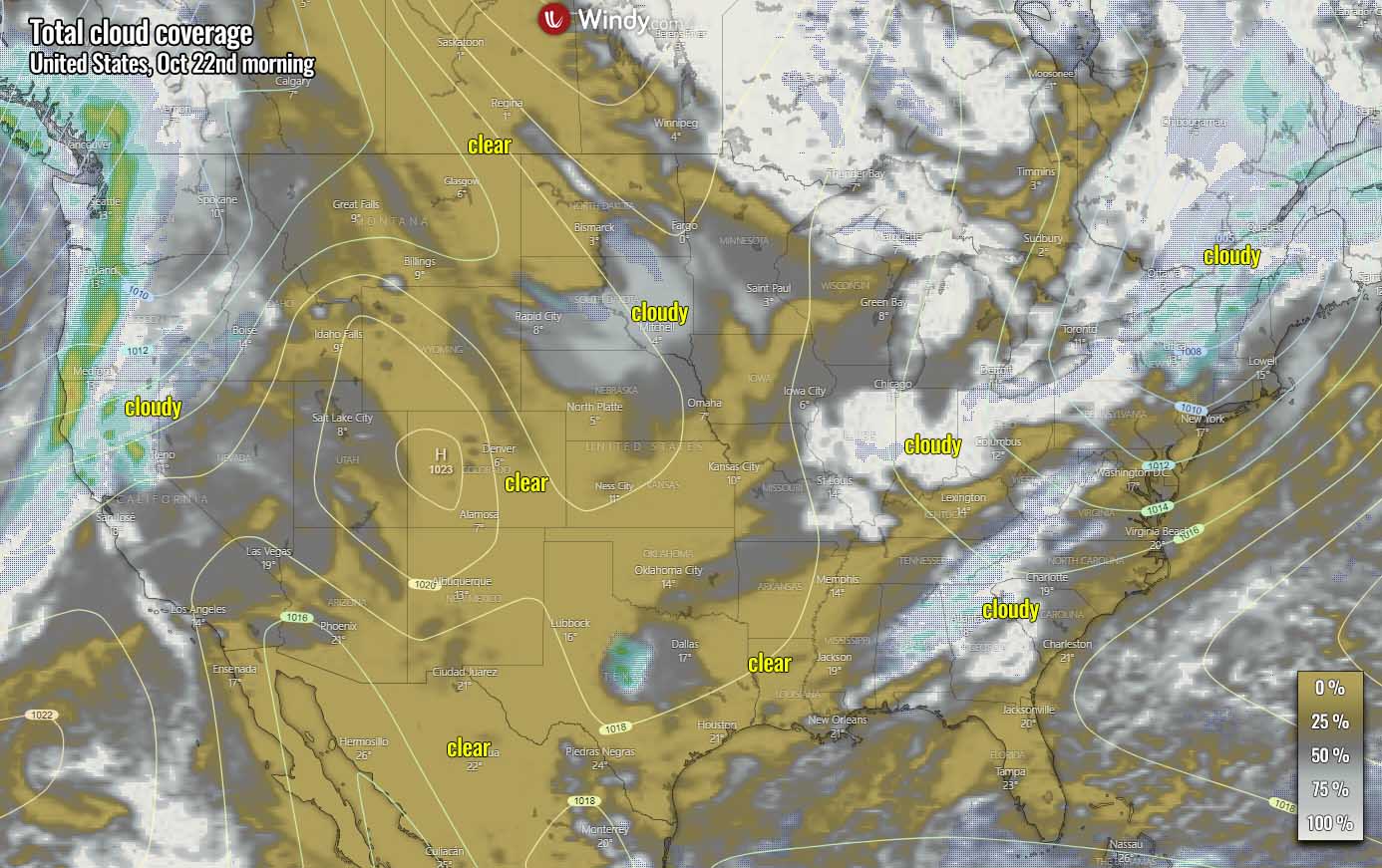
Across Europe, the influence of a large and very deep low and intense cyclone over Scandinavia brings unsettled weather patterns with relatively poor chances for clearing skies for many. There will be some clear skies in parts of western Europe, the Iberian peninsula, Algeria, southern Balkans, and the Black Sea region with Turkey and the Middle East.
The other areas will probably be struggling with cloudy nights around the Orionid meteor shower peak, especially across northern Europe but also along the frontal system moving across the northern Mediterranean and the Alps. A new frontal system emerging western Europe from the Atlantic will also bring pretty much cloudy skies to the UK and Ireland as well.
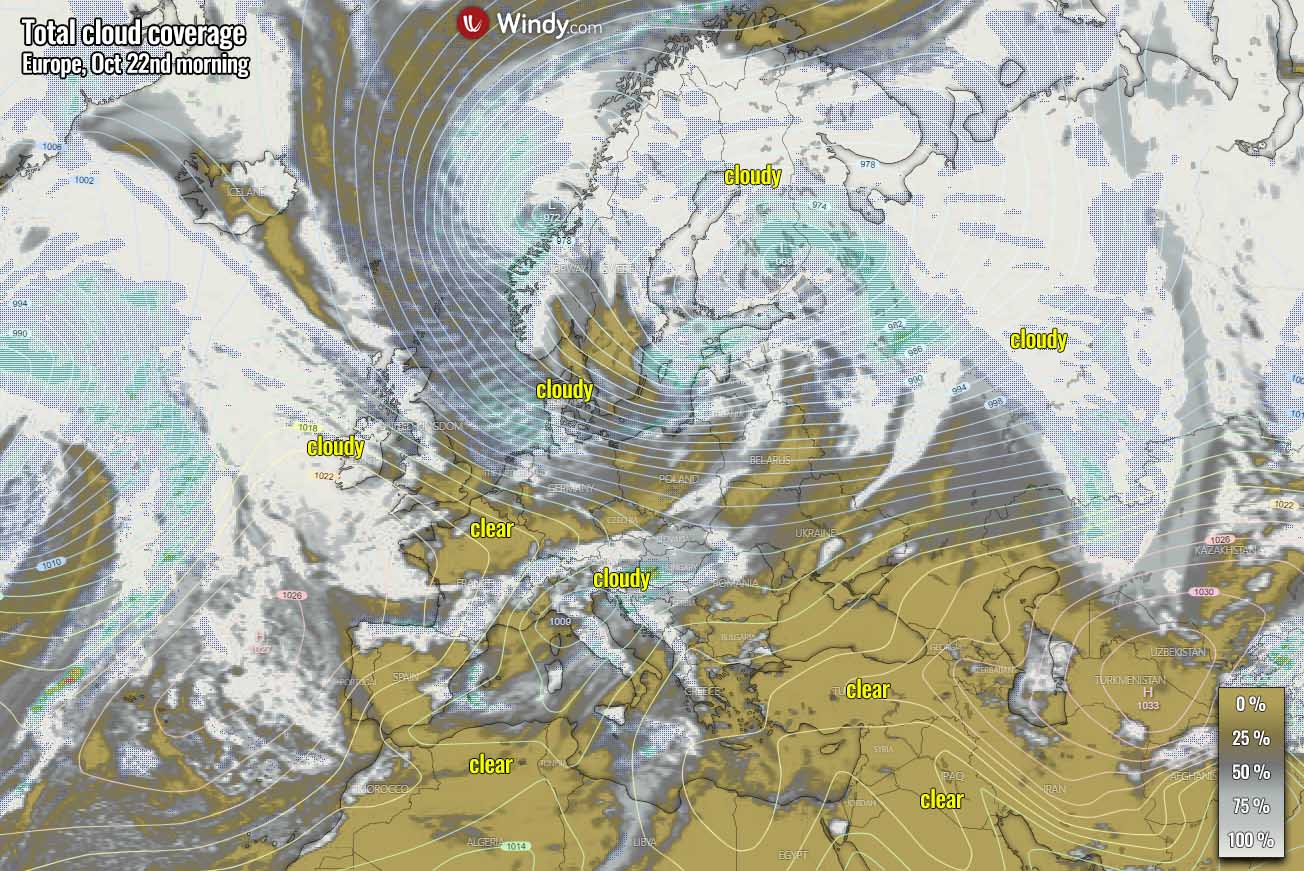
Good luck with your Orionid meteor shower observations and feel free to report your catches via our social media channels or send us an E-mail.
***The images used in this article were provided by Pivotalweather, and Windy.
Make sure to bookmark our page to not miss any future updates If you have seen this article in the Google App (Discover) feed or social media channels, click the like button (♥) to see more of our forecasts and our latest articles on weather and nature in general.